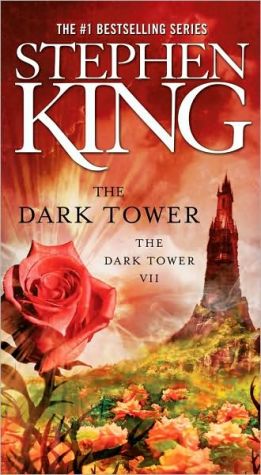
The Dark Tower PDF
Preview The Dark Tower
All good things must come to an end, Constant Reader, and not even Stephen King can make a story that goes on forever. The tale of Roland Deschain's relentless quest for the Dark Tower has, the author fears, sorely tried the patience of those who have followed it from its earliest chapters. But attend to it a while longer, if it pleases you, for this volume is the last, and often the last things are best.
Roland's ka-tet remains intact, though scattered over wheres and whens. Susannah-Mia has been carried from the Dixie Pig (in the summer of 1999) to a birthing room -- really a chamber of horrors -- in Thunderclap's Fedic; Jake and Father Callahan, with Oy between them, have entered the restaurant on Lex and Sixty-first with weapons drawn, little knowing how numerous and noxious are their foes. Roland and Eddie are with John Cullum in Maine, in 1977, looking for the site on Turtleback Lane where "walk-ins" have been often seen. They want desperately to get back to the others, to Susannah especially, and yet they have come to realize that the world they need to escape is the only one that matters.
Thus the book opens, like a door to the uttermost reaches of Stephen King's imagination. You've come this far. Come a little farther. Come all the way. The sound you hear may be the slamming of the door behind you. Welcome to The Dark Tower.
Amazon.com ReviewAt one point in this final book of the Dark Tower series, the character Stephen King (added to the plot in Song of Susannah) looks back at the preceding pages and says "when this last book is published, the readers are going to be just wild." And he's not kidding.
After a journey through seven books and over 20 years, King's Constant Readers finally have the conclusion they've been both eagerly awaiting and silently dreading. The tension in the Dark Tower series has built steadily from the beginning and, like in the best of King's novels, explodes into a violent, heart-tugging climax as Roland and his ka-tet finally near their goal. The body count in The Dark Tower is high. The gunslingers come out shooting and face a host of enemies, including low men, mutants, vampires, Roland's hideous quasi-offspring Mordred, and the fearsome Crimson King himself. King pushes the gross-out factor at times--Roland's lesson on tanning (no, not sun tanning) is brutal--but the magic of the series remains strong and readers will feel the pull of the Tower as strongly as ever as the story draws to a close. During this sentimental journey, King ties up loose ends left hanging from the 15 non-series novels and stories that are deeply entwined in the fabric of Mid-World through characters like Randall Flagg (The Stand and others) or Father Callahan ('Salem's Lot). When it finally arrives, the long awaited conclusion will leave King's myriad fans satisfied but wishing there were still more to come.
In King's memoir On Writing, he tells of an old woman who wrote him after reading the early books in the Dark Tower series. She was dying, she said, and didn't expect to see the end of Roland's quest. Could King tell her? Does he reach the Tower? Does he save it? Sadly, King said he did not know himself, that the story was creating itself as it went along. Wherever that woman is now (the clearing at the end of the path, perhaps?), let's hope she has a copy of The Dark Tower. Surely she would agree it's been worth the wait. --Benjamin Reese
From Publishers WeeklyA pilgrimage that began with one lone man's quest to save multiple worlds from chaos and destruction unfolds into a tale of epic proportions. While King saw some criticism for the slow pace of 1982's The Gunslinger, the book that launched this series, The Drawing of the Three (Book II, 1987), reeled in readers with its fantastical allure. And those who have faithfully journeyed alongside Roland, Eddie, Susannah, Jake and Oy ever since will find their loyalty toward the series' creator richly rewarded.The tangled web of the tower's multiple worlds has manifested itself in many of King's other works— The Stand (1978), Insomnia (1994) and Hearts in Atlantis (1999), to name a few. As one character explains here, "From the spring of 1970, when he typed the line The man in black fled across the desert, and the gunslinger followed... very few of the things Stephen King wrote were 'just stories.' He may not believe that; we do." King, in fact, intertwines his own life story deeper and deeper into the tale of Roland and his surrogate family of gunslingers, and, in this final installment, playfully and seductively suggests that it might not be the author who drives the story, but rather the fictional characters that control the author.This philosophical exploration of free will and destiny may surprise those who have viewed King as a prolific pop-fiction dispenser. But a closer look at the brilliant complexity of his Dark Tower world should explain why this bestselling author has finally been recognized for his contribution to the contemporary literary canon. With the conclusion of this tale, ostensibly the last published work of his career, King has certainly reached the top of his game. And as for who or what resides at the top of the tower... The many readers dying to know will have to start at the beginning and work their way up. 12 color illus. by Michael Whelan.
Copyright © Reed Business Information, a division of Reed Elsevier Inc. All rights reserved.
